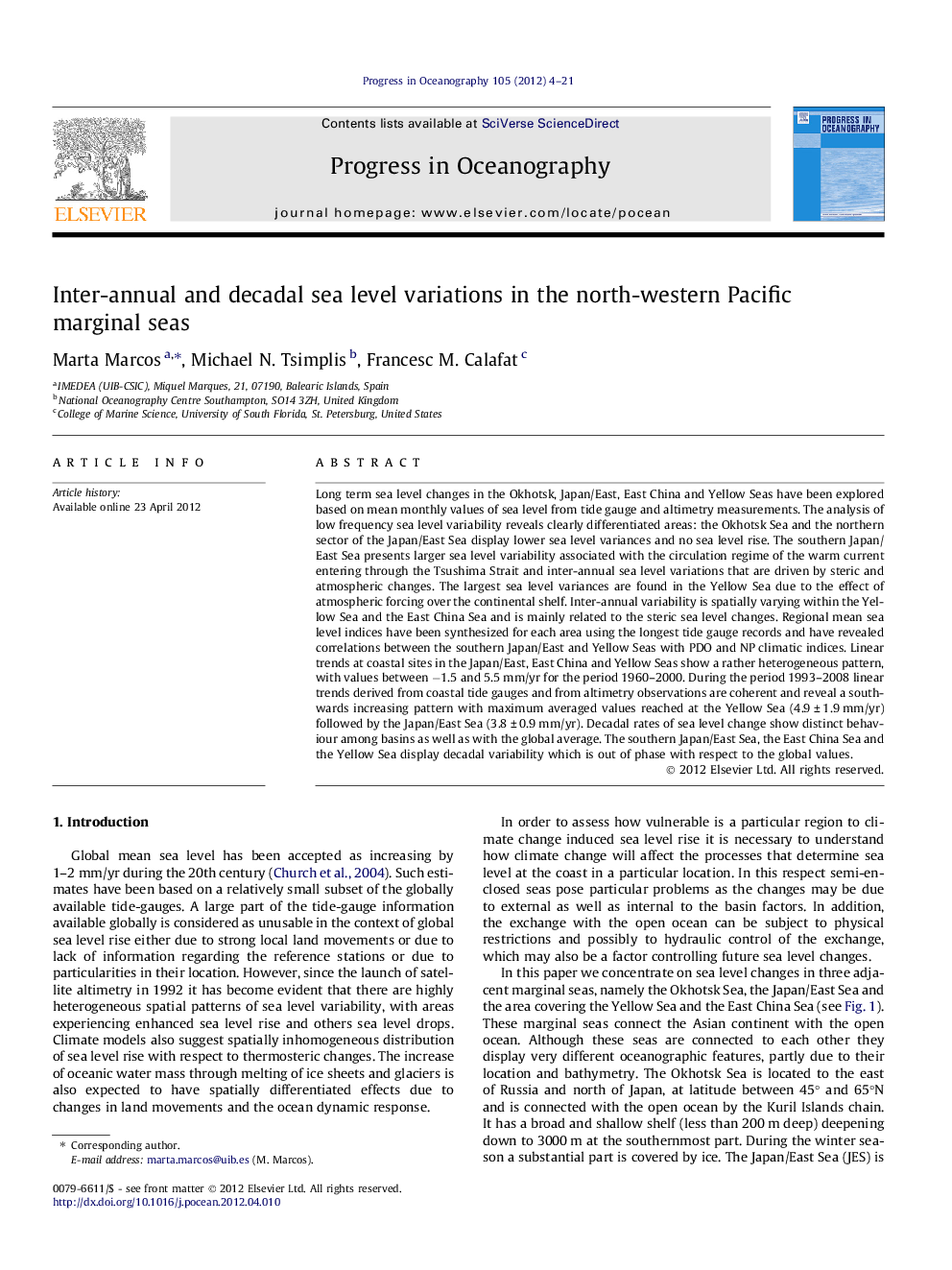| Article ID | Journal | Published Year | Pages | File Type |
|---|---|---|---|---|
| 4553255 | Progress in Oceanography | 2012 | 18 Pages |
Long term sea level changes in the Okhotsk, Japan/East, East China and Yellow Seas have been explored based on mean monthly values of sea level from tide gauge and altimetry measurements. The analysis of low frequency sea level variability reveals clearly differentiated areas: the Okhotsk Sea and the northern sector of the Japan/East Sea display lower sea level variances and no sea level rise. The southern Japan/East Sea presents larger sea level variability associated with the circulation regime of the warm current entering through the Tsushima Strait and inter-annual sea level variations that are driven by steric and atmospheric changes. The largest sea level variances are found in the Yellow Sea due to the effect of atmospheric forcing over the continental shelf. Inter-annual variability is spatially varying within the Yellow Sea and the East China Sea and is mainly related to the steric sea level changes. Regional mean sea level indices have been synthesized for each area using the longest tide gauge records and have revealed correlations between the southern Japan/East and Yellow Seas with PDO and NP climatic indices. Linear trends at coastal sites in the Japan/East, East China and Yellow Seas show a rather heterogeneous pattern, with values between −1.5 and 5.5 mm/yr for the period 1960–2000. During the period 1993–2008 linear trends derived from coastal tide gauges and from altimetry observations are coherent and reveal a southwards increasing pattern with maximum averaged values reached at the Yellow Sea (4.9 ± 1.9 mm/yr) followed by the Japan/East Sea (3.8 ± 0.9 mm/yr). Decadal rates of sea level change show distinct behaviour among basins as well as with the global average. The southern Japan/East Sea, the East China Sea and the Yellow Sea display decadal variability which is out of phase with respect to the global values.
► Long term sea level changes in PAMS are spatially very heterogeneous. ► Linear sea level trends at tide gauges are in general consistent with altimetry. ► Decadal sea level variability does not follow the global average.
